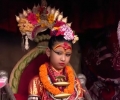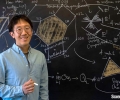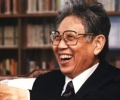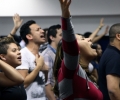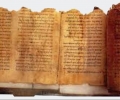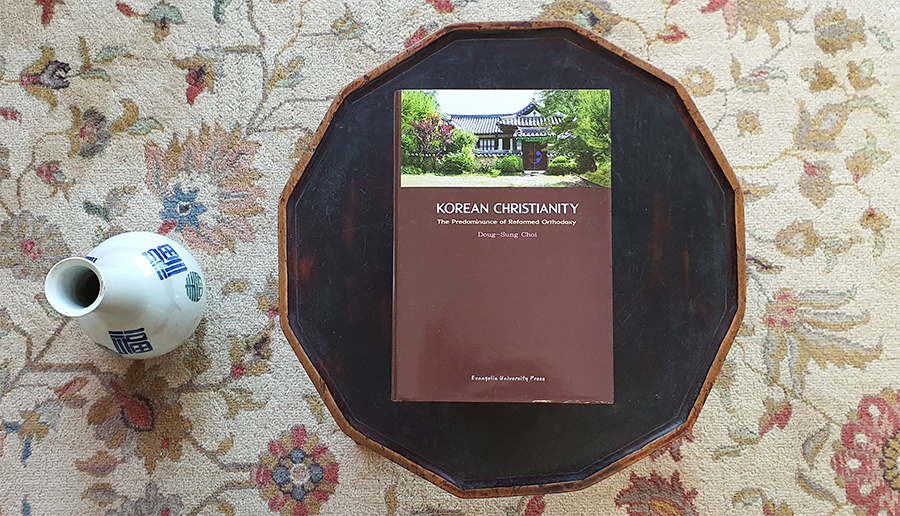
Book Review
KOREAN CHRISTIANITY: THE PREDOMINANCE OF REFORMED ORTHODOXY
by Douglass Choi, Ph.D.
I have long felt that there was a need for such a book Korean Christianity: The Predominance of Reformed Orthodoxy(Ananeim: Evangelia University Press, 2005) by Professor Doug-Sung Choi, Ph.D.. Korean Christianity is one of the most important forms of Christianity in the world and yet its history is little known. Those who now study that history of Christianity only in the West need to enlarge their vision to include the history of Christianity in Korea.
Many people today have heard of the growth and strength of Korean Christianity and perhaps of its many divisions. But they do not understand the history behind that growth and strength nor what has produced the divisions. The English-speaking community and academic world have long waiting for just such a book. The segment of history covered in this book is well designed to provide that understanding.
Many people also have heard of or encountered foreign missions from Korea and have perhaps been perplexed by the way they operate. Again this book will do much to relieve that perplexity since it examines the cultural and historical background from which those missions have sprung.
I do not know of any other book in English which fills these needs. This important part of church history has been neglected, even unnoticed, by English-writing historians. This important lacuna needs to be filled.
The book shows much careful, scholarly research and is intellectually solid. It will be respected by the academic community.
Having obtained much of his education in the United States, Dr. Choi understands the background of Christian traditions and the theological diversity. As an ordained minister, in his own spiritual life, he sees with sympathetic understanding the enterprise and conflicts whose story he is examining. he has gone to the pains of obtaining an excellent training in the methods of Western historians and so has acquired skill in the patient collection and evaluation of materials and objectivity in interpretation.
As a result, this first serious attempt of the examination of the history of Korean Christianity 1910-1960, of its character, tradition, phenomenon is outstanding that the book ought never to need to be undertaken again, and all future writers and students of this subject must make themselves familiar with Dr. Choi‘s work. He has performed his academic task so well that all who are in any way interested in the introduction of Korean Christianity must forever be his debtors.
The following is the introduction of the book that presents the subject, interest, and message of Korean Christianity.
The Korean Protestant church is generally known for its rapid growth in the past few decades. About 30% of the population of the country is Protestant, and Presbyterians comprise more than 61% of the Protestants and have one hundred twenty eight denominations. Most of these are minor groups, but the major denominations in the Presbyterian circle can be grouped under four headings (Kosin, Kichang, Hapdong, or Tonghap) according to their historical origin and theological tendency.
Although all of the Presbyterians identify with the European Reformation, three of these major groups claim commitment to the Reformed tradition. The theological tendency of these groups has generally been described as “Evangelical,” “Conservative,” and sometimes “Fundamentalistic,” but a more accurate descriptive term is “Orthodoxy”; they are similar to the Reformed orthodoxy known in America as fundamentalism in the 1920s and expressed by the old Princeton theology.
Almost all of the Presbyterian groups, including these three, identify with such historic Reformed literature as the Westminster Confession of Faith, the Larger and Shorter Catechisms, the Presbyterian Rule of Government, the Directory of Worship, and the Rule of Discipline and with such doctrines as the Sovereignty of God and the Five Points of Calvinism. The great majority are “Militant orthodox,” with one group “Latitudinarian” or “Ecumenical orthodox.” Only one group, Kichang, the smallest among the major camps, has freely advocated modernism, e.g., liberalism, neo-orthodoxy, and Minjung theology. This group makes up only 4% of the Presbyterian population in Korea, although its voice is not insignificant.
Korean Christian immigrants in the United States, Europe, and other parts of the world have similar denominational width in accordance with their home country’s breadth.
Why have fundamentalistic orthodox beliefs come to predominate in the Presbyterian circle in Korea? Although no one has fully answered this question, writers have alluded to it. Some believe that the conservative missionaries who led the Presbyterian Church in its formative years grounded it in their convictions. Harvie Conn astutely observes: “As with any church, younger or older, [theological] convictions are molded by those who plant the seed.” Some modernists, blaming fundamentalistic orthodox beliefs as the main cause of the divisions in Korea, cite the “Ultra-conservatism,” “canned orthodoxy,” “fixed sectarianism,” and “inflexible fundamentalism” planted by the early Western missionaries as the key to the problem.
This view has some validity and has been encouraged by theologians and historians. John Coventry Smith, Executive Secretary of the Foreign Mission Board of the United Presbyterian Church of the U.S.A., maintains that the concentration of conservative missionaries was a principal factor in the divisions that still plague the church:
The same results might have occurred if the emphasis had been a modernistic one instead of an orthodox one, but certainly the confinement of teaching to one particular representation of the Christian Gospel led to some of the difficulties that the church has faced. Such extreme conservatism led to separation and isolation from other streams even within the Reformed tradition.
Emil Brunner visited Korea in 1949 and wrote his impressions of Korean “Fundamentalism” in a letter to the Secretary of the Presbyterian Board of Foreign Missions: “The whole situation is no less than tragic. Korea is opened for the Gospel[,] but fundamentalism prevents Korea from becoming Christian!”
Certainly, the conservative convictions of the missionary leaders of the early church were a factor in the predominance of orthodox beliefs in Korea-but not the principal or the only factor. The Presbyterian churches in other countries during the same period were conservative and fundamentalistic, but most of them gradually accommodated modern theology. For example, in the last quarter of the nineteenth century, three Scottish Presbyterian churches abandoned the Westminster Confession of Faith. The United Presbyterian Church and the Free Church in Scotland both passed Declaratory Acts, which listed the principles to be used in interpreting the churches’ commitment to the Confession, but both the proposers and the opposers knew that they signaled the abandonment of Calvinism. The great majority of Presbyterian churches in most parts of the world no longer hold the convictions of earlier decades.9 The Korean Presbyterians are exceptional. Generally speaking, more than 90% of them are still “militant orthodox” they refuse to accept modern theology and are unlikely to change their position.
This book answers the question of why fundamentalistic orthodox beliefs predominate in the Presbyterian circle in Korea. While no simple, unicausal answer exists, it finds cultural and historical reasons for the loss of modernist authority and credibility and domination by the orthodox wing.10 It examines the question historically by investigating the Korean way of understanding reality and Korean Presbyterianism as expressed in the ecclesiastical conflicts, 1910-1960, centering on Shintoism; on the understanding of the nature of the church; on the debates about the inspiration, authority, and interpretation of Scripture; on the conflicting ecumenism; and continuing divisions of the church, all of which both surrounded and followed those controversies. Issues related to divine truth, the nature of the church, the view and interpretation of Scripture, and conflicting ecumenism are always rooted in and related to other issues, such as history, culture, politics, society, and psychological drive, the Presbyterian controversies in Korea were no exception. This book investigates historical, cultural, theological, political, social, and psychological factors. The main causes, nevertheless, were historical and cultural.
Two main camps exist within the Presbyterian circle in Korea, and they formed over a long period of time. By investigating that history, this work discovers why each group thinks as it does and why the orthodox group predominates.
The dominant orthodox group holds very high respect for the Bible and sees it as revelation, as God’s immutable and perspicuous Word-the truth. That truth in Scripture is unchanging and absolute and does not depend on our interpretation of it but has an objective validity apart from our subjective interpretation and will always be the judge of our interpretation. This view of truth is rooted in and has been enforced by the cultural heritage of Korea, especially Korean realism with its static, immutable, perspicuous view of truth and the realism of the orthodox Reformed tradition as reinforced by Scottish common-sense realism and Baconian inductive science. Korean realism was congenial to orthodox realism and, in an antithetical atmosphere of conservatism and exclusivism, forged links between the two cultures. They perpetuated orthodox beliefs and provided a cultural base for the predominance of orthodoxy, rejecting compromise and change.
On the other side are the contextualists. They also have a high respect for the Bible but do not see it as containing absolute and objective truth. Rather, truth in Scripture cannot be separated from our subjective interpretation of it; it is the result of the interrelation of the subjective interpreter and the written text, which includes the subjective element of the original author. Thus, the Word must be understood, de-mythologized, or rationalized, and one cannot separate truth from the context in which it is interpreted. Contemporary Christians, accordingly, need to understand the Bible in light of the modern context, including the scientific, political, and cultural situation. This view of truth induced dynamism, relativism, pluralism and an eventually precarious and diffuse belief system. The contextualists questioned traditional Presbyterian moorings, claimed a liberation of theology, and easily assimilated new thoughts and situations.
One of the main factors influenced both the character and direction of the Presbyterian movement in post-liberation times was Shinto shrine worship, a result of Japanese military occupation. It involved not simply worshipping kami, Japanese gods, at shrines but taking portable shrines into homes and churches and reciting oaths of allegiance in Japanese to the kami. Baptism required a confession that there were no other gods than kami and a total immersion in their name administered by Shinto priests. A “patriotic” ceremony required acceptance of the Japanese “spirit,” religious nationalism, and cultural assimilation. The shrine issue tested the depth of the commitment of Korean Christians to Christ and to their nationalistic identity and selfhood.
Orthodox first opposed and then tacitly and passively compromised with shrine worship, and most Presbyterians did likewise, but attitudes regarding allegiance to the Korean nation differed. Some orthodox resisted the Japanese imposition of Shintoism not only to be faithful to the commands of Scripture but to support and defend their Korean identity and selfhood. After the occupation and with the resurgence of nationalism, the resistors looked much better than the accommodators, and the cultural and political climate aided the triumph of the orthodox.
Contrastingly, the contextualists in general actively accommodated shrine worship and collaborated with the Japanese and Shinto nationalism. Largely because of their theological training by relatively liberal teachers in Japan and America, they questioned the traditional orthodox teachings as too simplistic and as not up-to-date.
The shrine issue sharply divided the Presbyterian community in Korea. The line of demarcation became resistors and compromisers, orthodox and contextualists, conservatives and liberals, and anti-Japanese and pro-Japanese. The shrine issue was the principal cause of strife between contenders for ecclesiastical power and control of theological education, and the most crucial, pervasive, and insistent result was a psychological drive for the revival of orthodox theology and the conservative tradition that had existed before Japanese intervention humiliated and tainted the church.
During the first five years of the 1945 liberation, factionalism and exclusivism demolished the basic structure of the church. The shrine issue continued to loom large. Charges and counter-charges were aired as to who had betrayed and who had been betrayed. The majority of Presbyterians believed that the church had apostatized under contextualist leadership through sinful acts at Shinto shrines. They specifically opposed the “new theology” of the contextualists, who, they felt, had thus betrayed the church, improperly seized power and authority, and controlled theological education.
The first major schism developed when the resistors (the “freed Christians” who were released from the prisons at the end of the persecution) sought the public confession of guilt or penitential discipline of the lapsi, both the contextualists and the moderate orthodox who had compromised and apostated. The freed Christians proposed a public penance based upon their traditional Reformed understanding of the church that is prescribed in the Presbyterian constitution. The contextualists, to protect their positions of power, criticized the resistors and attacked their orthodox theology and view of Scripture. A movement arose among those who had tacitly or passively participated in Shinto worship but were unwilling to repent as suggested by the freed Christians. The lapsi in their use of the church’s hierarchical power, excommunicated the purists.
However, most were concerned with the charges that the orthodox had leveled at the contextualists. The tacit participants, the compromised orthodox, consolidated to purge the liberal and Japanese elements in the church, challenged the new theology of the contextualists, and wrested ecclesiastical power from the liberals. This challenge led the contextualists to form their own church-the second major schism. Their separation was described by the contextualists as an “exodus” from the “yoke” of orthodox indoctrination and as a covenant for new theology and freedom of thought.
The third major schism was an expression of the exclusivism, agitating by foreign missionaries, the ignorance of legality and discipline and unity, which all, ironically, have accelerated the prosperity of Korean Reformed orthodoxy. Having gained control of the church, the evangelical orthodox joined with the “freed Christians” who had been ousted years earlier. In this manner, orthodoxy was strengthened, and contextualism was isolated in one particular denomination and lost its authority to educate Presbyterians outside of its denomination.
The examination herein begins with overviews of the cultural and historical background of Korean Christianity, focusing on its characteristic features, especially realism, the mode of looking at and understanding reality. Included is the response of the Korean people to Christianity, with special reference to Presbyterianism. The third chapter considers orthodox Korean Presbyterianism; its origin; its trends; its emphases; and its convictions about truth, theology, and Scripture. Under examination are historical and theological motives, such as the unshakable faith of orthodox Korean Presbyterianism in truth, Scripture, and the Presbyterian directives. Chapter IV looks at the origin and rise of contextualism and focuses on its precarious and diffuse belief system and dynamic, relative, and pluralistic character. In Chapter V, the examination turns to several significant controversial events before the major schisms to note how the two groups confronted them and the conflict thus entailed. The underlying political conflict that contributed to the rise of the psychological drive for orthodox theology is also discussed.
The investigation of the conflict over Shinto nationalism (Chapters VI and VII) shows the motives and progress of both compromise and resistance. It indicates how the historical “trial” contributed to the psychological drive for orthodox theology, with the majority of Presbyterians rediscovering orthodoxy as a unique tradition not only for Christian faith but for Korean identity and selfhood. Chapter VIII describes the clash that resulted in the first major schism and the issue of apostasy resulting from shrine worship. It shows how the innocents, the freed Christians, were ousted by the lapsed and collaborating Christians and how the schism was viewed. The ninth chapter investigates the underlying understanding of the nature of the church in the first schism. Chapter Ten examines the second major schism, which was specifically concerned with different views of Scripture. The underlying cause of the conflict was the psychological drive for the revival of the orthodox tradition and the desire to purge the liberal and Japanese elements from the church. Chapter Eleven examines the conflicting ecumenism and its results of the third major schism.
Use is made of all primary sources, written mostly in Korean, with some in English: books, articles, autobiographies, statements, reports, minutes, catalogues, the Constitution of the Church, confessional literature, letters, journals, commentaries, and others. Shinhakjinam [The Presbyterian Theological Review], published by Presbyterian Theological Seminary in Pyongyang, and Pasookoon [The Watchman] provided the most helpful information. The collected works of Hyung-Yong Park and Jai-Choon Kim yielded information on their views of theology, Scripture, and the church. Some secondary sources, such as published books, articles, and unpublished theses on the Korean Church, were also helpful as a start.
For conceptual clarity, this work uses the terms “orthodox” and “contextualist”/ “contextualists” for the two major theological communities involved in the conflicts. The terms, however, are artificial, and efforts to define them narrowly have sometimes led to strife among historians and theologians. Many of the participants in the conflicts sought to scandalize through labeling. Thus, often, the labels did not have a clear or an honest meaning. Careless use of terms sometimes distorted ideas and resulted in the breakdown of communication and the development of tragic misunderstandings. Some Korean contextualists, for example, whom a theoretically neutral observer would see as relatively evangelical, became liberal. The orthodox, who were relatively rational in tendency, became ultra-fundamentalist or anti-intellectual. Such terms are nonetheless a place to begin.
The term orthodox(kyubumjuicha) represents the conservative Presbyterians of rational character who emphasized faithfulness to Reformed orthodoxy or Calvinism and such external elements of faith as Scripture, Confessions, Presbyterian doctrines, and rule of government and discipline. The term further refers to those who hold a high view of Scripture as the inspired Word of God and insist upon its infallibility and accuracy as the representation of the will of God in its original autograph. It also refers sometimes to those who are not anti-intellectual, yet are suspicious of all new forms of theological thought. For convenience, the terms “moderate orthodox,” “evangelical orthodox,” and “ecumenical orthodox” are used in the latter part of this work. Regardless of the labels, all of the orthodox are similar to those of the European Reformed orthodoxy known in America as fundamentalism expressed in the old Princeton theology.11 The “freed Christians” and the “radicals,” both groups led by those who were released from the prisons after the end of the World War II, are also orthodox, cling to Calvinism, i.e., Reformed tradition,
The term “contextualist” is an inclusive term referring to those who held the opposite or contrasting theological view from those discussed above. “liberal” and “modernist” are terms used widely in Korea, but they are not proper terms because of the “dynamism” of the theological identity and precarious and diffuse belief system of this group. Contextualists who were theologically liberal, especially in the early period, partially aligned with neo-orthodoxy during the later period of debate over the issue of biblical authority. Thus they cannot be categorized by a fixed term. In Paul Tillich’s language, the Korean contextualists are those who hold the “theology of mediation,” which combines traditional biblical reality with the concerns of the modern mind and has opened up modern scholarship with its pluralistic and relative views. The term “contextualist”(maeklakjueuicha or sangwhangjueuicha) actually not used at the time of controversies nor directly connected to theological contextualism which is developed later, is appropriate and acceptable to both theological groups in Korea. “Accomodationist” would be an alternative for contextualist.
In this examination of disagreements and schisms of the Church, the author hoped to be as objective as possible and to generate light rather than heat. Yet, no matter how objectively this work speaks, how irenic the presentation, some sensitive reactions may follow. The word “objective” today, in contrast to “subjective,” means scientifically verified or empirically true. This is not the sense intended in this work. One cannot simply transpose categories from science to the humanities. Still, what this writer has in mind is providing a balanced, descriptive discussion.
Reverend Charles W. Forman, Ph.D.
Professor Emeritus
History of Christianity and Mission
Yale University
<저작권자 ⓒ 리포르만다, 무단 전재-재배포-출처 밝히지 않는 인용 금지>
▶ 아래의 SNS 아이콘을 누르시면 많은 사람들이 읽을 수 있습니다.


 THE CONLICTS IN THE VIEWS OF THE BIBLE, PCK
THE CONLICTS IN THE VIEWS OF THE BIBLE, PCK
 단순한 삶이 아름답다
단순한 삶이 아름답다
